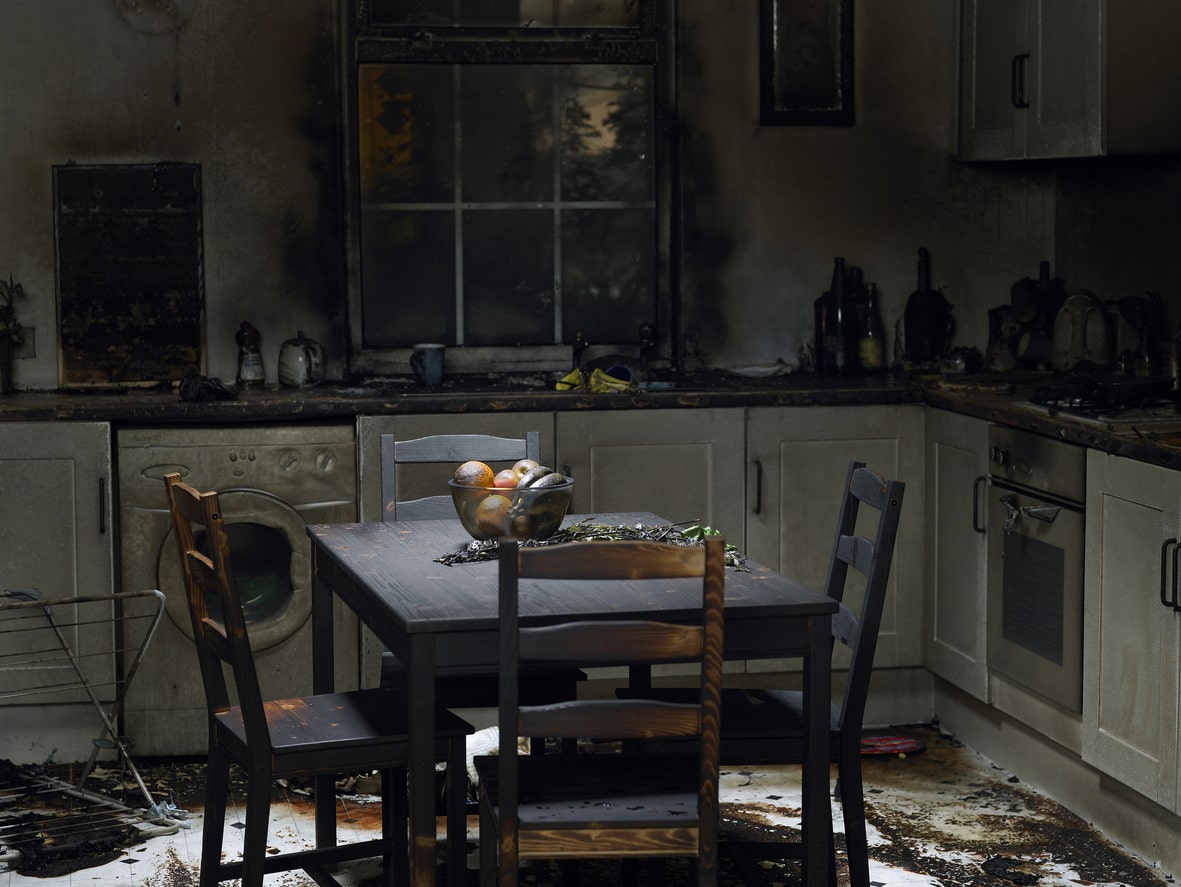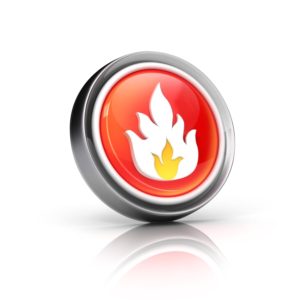
The fire damage restoration process. Fires destroying property is a common occurrence. In 2017 alone, fires caused over $23 billion in property damage across the United States. Unfortunately, there’s no way that you can truly prepare for the devastation that a house fire can bring about. However, you can take steps after the fire to minimize your losses and restore your home.
Below is a guide that will help you better understand the fire damage restoration process. While this guide can help you better understand the steps that are taken, you should never attempt to restore your home on your own after a fire. Always seek the guidance and knowledge of a professional fire restoration company. Click here for the Best-Selling Fire Safety Products.
Confirm That Your Property Is Safe to Enter

This first step is crucial and one that you won’t be able to do yourself. Fires cause structural damage to homes by weakening or completely destroying support beams. As a result, your home may be unsafe to enter after a fire.
A remediation professional can confirm whether or not your property is safe to enter. This professional checks for signs of structural damage that may affect the integrity of your home. If you’re concerned about this in any way, don’t enter your house until an inspector deems that it’s safe to do so.
Minimize the Damage
What you may not know is that, even when a fire has been extinguished, damage is still being done to your home. Smoke and soot can continue causing problems long after the flames die out. Also, if water was used to put out the flames, there’s a chance that mildew and mold could become a problem.
Soot
One example of this type of damage is soot staining. It occurs when soot in the air binds to surfaces within your home. Since soot can travel, stains can occur in areas where the fire didn’t happen. It discolors objects in the house, so quickly cleaning soot can prevent discoloration and further damage.
If the soot is left on surfaces for too long, permanent discoloration can occur. When this happens, you may have little choice but to replace the discolored items. Some materials are more susceptible to soot staining than others, such as textiles, grout and carpeting.
Smoke
A majority of the damage that occurs after a fire is from smoke. It can cause lingering odors that are nearly impossible to get rid of. Oftentimes, this results in throwing out items that weren’t even damaged by the fire because they smell of smoke.
Once again, cleaning up smoke damage can prevent the lingering smell. Compared to cleaning soot, though, it’s a bit more complicated. A restoration professional uses an air mover and scrubber to clean the air within the home. Along with preventing smoke damage, hiring a professional soon after a fire could save you money in the long run.
Mold and Mildew
Fires don’t directly cause mold and mildew to grow in a home. Instead, the growth is a result of extinguishing the flames. Typically, fire departments use water to put out fires. When this happens, mold and mildew can set in quickly. On top of that, you might end up with extra moisture in your home if the roof was damaged and it rains before you can repair it.
It can be difficult to spot signs of mold and mildew in your home without help from a professional. The reason is that water can leak behind floorboards and wall materials. This can cause the formation of mold in areas that you can’t see.
Fortunately, restoration professionals can dry your home quickly, preventing the formation of mold and mildew. If, by chance, mold does form, they can completely remove it as well.
Rust
Rust is another problem that can develop because of the water that firefighters use to put out the flames. When water interacts with metal, it creates rust or corrosion. The quicker that humidity levels get under control in your home, the less of a chance that rust and mold have of forming.
Once rust develops, you’ll likely have to completely replace electronic components. The reason is that electronic corrosion is usually irreparable. Additionally, it can increase the risk of electrical shock and another house fire. Because of that, drying out your home quickly after a fire is a top priority to prevent more damage.
Remove Debris and Soot
After minimizing the damage, it’s time to remove all of the debris and soot. As mentioned, soot can cause more damage to your home when it’s not cleaned up. The process of removing it typically includes scrubbing down every surface that has soot on it.
As far as removing debris goes, you’ll want to remove all items that are damaged beyond repair. This includes belongings that are ruined by soot, smoke and water. They tend to hold onto airborne odors, so the sooner that you remove them, the quicker that you can improve your indoor air quality.
If you have items that are too damaged to be cleaned and must be removed, restoration professionals can help you remove them. It might be unsafe for you to remove these belongings on your own. Touching appliances or electrical machines, for instance, might result in electrical shock if they still store electricity. To avoid this, unplug all electronic devices before you try to move them.
Eliminate Odors
Deodorizing your home is a very involved step. Many of your items have likely absorbed the odor of smoke caused by the fire. In most cases, you’ll have to hire a professional if you want to completely deodorize your house. To ensure proper deodorizing, multiple steps must be taken.
Identify the Type of Fire
The type of fire plays a big role in determining how to eliminate odors within your home. For example, high oxygen fires leave behind dry smoke residue. Low oxygen fires, on the other hand, tend to leave a smoky, wet residue behind. This wet residue causes the pores within wood to open up, allowing it to absorb the smell of smoke.
You probably wouldn’t be able to tell what kind of fire damaged your home without training. A professional can easily tell so that you can take the necessary steps to eliminate odors.
Ventilate Your Home as Soon as Possible
While your first step should be to call a restoration professional, your second step needs to be ventilating. The sooner that you can ventilate your home, the sooner that your indoor air quality can recover. Being quick to ventilate will make it easier to deodorize your home too.
Remove Plastics, Leathers and Other Chemicals
Very rarely does the smell of smoke only come from burned wood. It can come from other items that are burned during fires, such as plastics and leathers. The faster that you get these items out of your home, the better that you can prevent permanent odors.
Keep in mind that many plastics release toxic fumes when they burn. If you handle any of these items yourself, you should wear gloves and a mask. For gloves, go with heavy ones to ensure that broken glass or debris doesn’t penetrate through.
Time Is of the Essence
Smoke is corrosive. Given enough time, it can break down nearly anything. Starting the restoration process as soon as possible will reduce the damaging effects. However, smoke isn’t the only element that you have to watch out for.
Within minutes, soot can turn plastic yellow. After hours, acidic residue from soot can stain the grout in your bathroom. Also, it can tarnish metals and stain fixtures in your house, including tabletops and appliances. Within days, many items become permanently discolored.
If you wait weeks to hire a professional, the cost of your fire damage restoration will increase tremendously. At this point, smoke and soot can cause permanent discoloration of nearly any item in your home. The prolonged exposure causes odors that can’t be removed from the walls and floors in your home as well.
Remove Items From Your Home
How fast that you start the cleanup process will play a big role in determining which items have to be removed from your home. Once an item has the smell of smoke, it may never go away. In fact, reports show that the documents that were recovered from the 1906 San Francisco fire still have the smell of smoke on them.
Your first step is to get rid of all sources of smoke odor in your home. This includes getting rid of any items that are deemed completely lost or that will be deodorized off-site. With that said, how do you know if something is damaged beyond repair? Restoration experts look for a few specific signs to determine what’s lost and what can be saved:
Any pieces of the house frame that have been charred more than ¼ of an inch are usually considered lost. Removing any of the frame requires a structural engineer. Typically, drywall can be cleaned nearly 80% of the time if smoke residue didn’t get behind it. If it did, the only option is to remove and replace the drywall. Tiles can usually be cleaned, but the grout might be unsalvageable. If this happens, it must be removed and replaced. Any solid counters, such as granite, can be cleaned. However, smoke can leave granite permanently discolored. Carpets can only be cleaned of light smoke. In most cases, they have to be completely removed. Laminate floors are highly absorbent when it comes to smell, so they’re typically replaced. Real wood floors can be sanded to remove the smell of smoke and any smoke damage. Insulation replacement is a must when it comes to removing the smell of smoke. It absorbs the smell without fail.
Any items that are left in your home have to be cleaned. Anything that isn’t cleaned may be a sponge for the smell of smoke. Failure to clean everything could result in clean items being infiltrated by the odor.
Hire a Fire Damage Restoration Professional
As you can clearly see, fire damage restoration isn’t a simple process. In fact, it’s not a typical undertaking for most homeowners. Since it requires cleaning and removing so many items, hiring a fire damage restoration professional is often the best decision.
Most notably, a professional can get the job done quicker. The sooner you get the fire damage under control, the less damage that the moisture, soot and smoke can cause to the other items in your home. Furthermore, you’ll likely need to have your whole HVAC system cleaned. That’s a step that many homeowners don’t think about, but damage restoration professionals do.
Contact a fire damage restoration company today for a free consultation. Doing so allows you to shop around to find the best restoration company to fit your budget and needs. Click here for the Best-Selling Fire Safety Products.
Additional Resources:
https://en.wikipedia.org/wiki/Fire_safety
https://homesafetydot.com/article-sitemap-1-61cc84/
https://homesafetydot.com/article-sitemap-2-de7bff/
https://homesafetydot.com/article-sitemap-3-eb4e4a/
https://homesafetydot.com/article-sitemap-4-e75eb4/